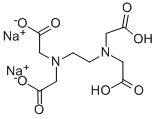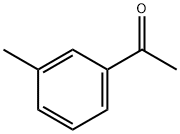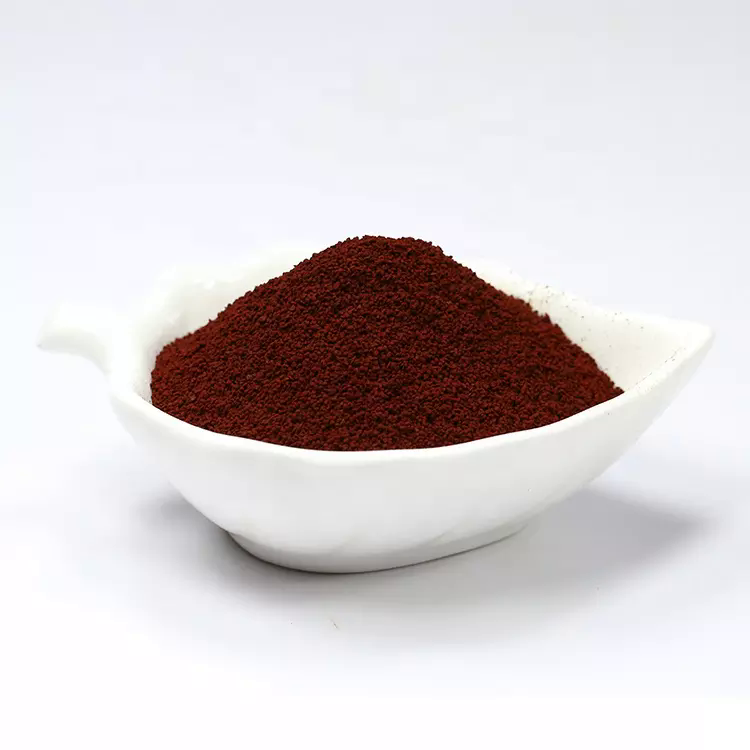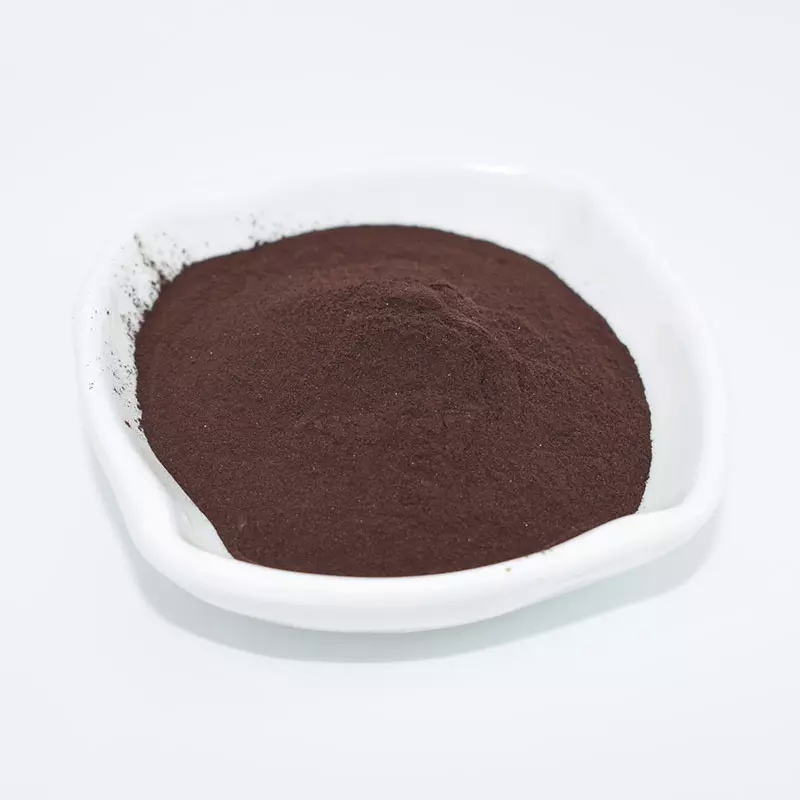Alizarin Complexone
Synonym(s):3,4-Dihydroxyanthraquinon-2-yl-methylimino-diacetic acid;Alizarin Complexone;Alizarin Fluorine Blue;N-(carboxymethyl)-N-[(9,10-dihydro-3,4-dihydroxy-9,10-dioxo-2-anthracenyl)methyl]-glycine
- CAS NO.:3952-78-1
- Empirical Formula: C19H15NO8
- Molecular Weight: 385.32
- MDL number: MFCD00001202
- EINECS: 223-544-2
- SAFETY DATA SHEET (SDS)
- Update Date: 2025-12-04 18:00:12

What is Alizarin Complexone ?
Description
Alizarin-3-methyliminodiacetic acid is a colorimetric dye for the detection of fluoride ions. It reacts with fluoride to form a lilac-blue complex which can be quantified colorimetrically at 620 nm to determine fluoride concentration. Alizarin-3-methyliminodiacetic acid has been used to visualize fluoride deposition and bone mineralization during development in medaka larvae. It is also an inhibitor of inducible nitric oxide synthase (iNOS; IC50 = 35 nM).
Chemical properties
Brown-orange crystals, insoluble in water
The Uses of Alizarin Complexone
Alizarin Complexone is used for the determination of fluorine and other anions. ATA is also a potent inhibitor of protein-nucleic acid interactions.
The Uses of Alizarin Complexone
Alizarin is the main ingredient for the manufacture of the madder lake pigments known to painters as Rose madder and Alizarin crimson. A notable use of alizarin in modern times is as a staining agent in biological research because it stains free calcium and certain calcium compounds a red or light purple color. Alizarin Red is used in a biochemical assay to determine, quantitatively by colorimetry, the presence of calcific deposition by cells of an osteogenic lineage.
The Uses of Alizarin Complexone
Alizarin-3-methyliminodiacetic acid has been used:
- for live staining of mineralized bone matrix
- to double-label the bone for dynamic bone histomorphometry at the femoral mid-diaphysis in the rat
- as a label in histomorphometry of the tibial diaphysis to indicate new bone formation in the rat
What are the applications of Application
Alizarin-3-methyliminodiacetic acid is a biological dye
Definition
ChEBI: A dihydroxyanthraquinone compound in which the hydroxy groups are at C-1 and C-2 and which has a bis[(carboxymethyl)amino]methyl substituent at the 3-position.
General Description
Alizarin-3-methyliminodiacetic acid is used in the colorimetric detection of fluorine. It is a dye employed to stain mineralized bones of the preserved specimen from vertebrates.
Hazard
Anthraquinones are toxic by ingestion: vomiting, diarrhea, kidney and
liver damage, and coma;
Deaths have been reported after children
ingested Rhamnus berries;
Has antiretroviral activity;
An irritant;
Harmful by ingestion, inhalation, or skin
absorption;
Toxic if swallowed.
Purification Methods
It is purified by suspending it in 0.1M NaOH (1g in 50mL), filtering the solution and extracting alizarin with 5 successive portions of CH2Cl2. Then add HCl dropwise to precipitate the reagent, stirring the solution in an ice bath. Filter the precipitate onto a glass filter, wash it with cold water and dry it in a vacuum desiccator over KOH [Ingman Talanta 20 135 1973, Beilstein 14 IV 931].
Mode of action
Alizarin (1,2-dihydroxyanthraquinone) could form deeply colored metal complexes. Their stability can be increased considerably when edta-derived substituents are attached to the alizarin frame as a commercially available product of this type, alizarin complexone (AC) is a very useful reagent for the spectrophotometric determination of metals. The high stability of such metal complexes is essentially based on the chelate formation at the tridentate complexone substituent. However, if the coordination is restricted to this substituent, the spectral properties of alizarin should not be affected by metal cations owing to the electronically insulating methylene group between the complexone substituent and the alizarine nucleus. Accordingly, the color change observed upon complexation of AC is a consequence of forming an additional bond from a phenolate of the alizarin ring system to the metal[1]. Due to AC's low solubility in water, it could be soluble in ethanol in experiments. A solution of AC is yellow and displays an absorption with λmax = 430 nm(e = 5200 M-1 cm-1). The luminescence spectrum consists of two bands at λmax = 476 nm and 629 nm.
References
[1] Horst Kunkely, Arnd Vogler. “Fluorescence of alizarin complexone and its metal complexes.” Inorganic Chemistry Communications 10 3 (2007): Pages 355-357.
Properties of Alizarin Complexone
| Melting point: | ~185 °C (dec.) |
| Boiling point: | 511.79°C (rough estimate) |
| Density | 1.4951 (rough estimate) |
| refractive index | 1.5000 (estimate) |
| storage temp. | 2-8°C |
| solubility | DMF: 10 mg/ml; DMSO: 10 mg/ml; DMSO:PBS (pH 7.2) (1:7): 0.125 mg/ml |
| pka | 1.71±0.10(Predicted) |
| form | Fine Powder |
| color | Brown |
| Water Solubility | Slightly soluble (0.2 g/L) |
| BRN | 2190028 |
| Stability: | Incompatible with strong oxidizing agents. |
| InChI | InChI=1S/C19H15NO8/c21-13(22)7-20(8-14(23)24)6-9-5-12-15(19(28)16(9)25)18(27)11-4-2-1-3-10(11)17(12)26/h1-5,25,28H,6-8H2,(H,21,22)(H,23,24) |
| CAS DataBase Reference | 3952-78-1(CAS DataBase Reference) |
| EPA Substance Registry System | Glycine, N-(carboxymethyl)-N-[(9,10-dihydro-3,4-dihydroxy-9,10-dioxo-2-anthracenyl)methyl]- (3952-78-1) |
Safety information for Alizarin Complexone
| Signal word | Warning |
| Pictogram(s) |
 Exclamation Mark Irritant GHS07 |
| Precautionary Statement Codes |
P261:Avoid breathing dust/fume/gas/mist/vapours/spray. P264:Wash hands thoroughly after handling. P264:Wash skin thouroughly after handling. P270:Do not eat, drink or smoke when using this product. P271:Use only outdoors or in a well-ventilated area. P280:Wear protective gloves/protective clothing/eye protection/face protection. P501:Dispose of contents/container to..… |
Computed Descriptors for Alizarin Complexone
| InChIKey | PWIGYBONXWGOQE-UHFFFAOYSA-N |
| SMILES | C(O)(=O)CN(CC(O)=O)CC1=C(O)C(O)=C2C(=C1)C(=O)C1=C(C=CC=C1)C2=O |
Alizarin Complexone manufacturer
New Products
Indole Methyl Resin tert-butyl 9-methoxy-3-azaspiro[5.5]undecane-3-carboxylate Boc-His(Boc)-OH 2-CTC Resin 4-Chloro-7-tosy1-7Hpyrrolo[2,3-d]pyrimidine 5,7-Dibromo-1H-indole 2,5-dichloro-N-hydroxy-4,6-dimethylpyridine-3-carboximidamide 2,2-Dimethoxy-7-azaspiro[3.5]nonane hydrochloride 4-chloromethyl-5-methyl-1,3-dioxol-2-one (DMDO-Cl) R-2-BENZYLOXY PROPIONIC ACID 1,1’-CARBONYLDIIMIDAZOLE 1,1’-CARBONYLDI (1,2-4 TRIAZOLE) N-METHYL INDAZOLE-3-CARBOXYLIC ACID 4-((2-hydroxyethyl)thio)benzoic acid 1-(TERT-BUTOXYCARBONYL)-2-PYRROLIDINONE Methyl 6-methylnicotinate 3-Pyridineacrylic acid tert-Butyl carbazate TETRAHYDRO-2H-PYRAN-3-OL 2-((4-morpholinophenylamino) (methylthio) methylene) malononitrile 3-(4-morpholinophenylamino)-5-amino-1H-pyrazole-4-carbonitrile 2,4-dihydroxybenzaldehyde 1,3-Diethyl-1,3-Diphenylurea Methyl 2-methylquinoline-6-carboxylateRelated products of tetrahydrofuran








You may like
-
 3952 - 78 -1 Alizarine Complexone 98%View Details
3952 - 78 -1 Alizarine Complexone 98%View Details
3952 - 78 -1 -
 3952-78-1 99%View Details
3952-78-1 99%View Details
3952-78-1 -
 Alizarin Complexon 90%View Details
Alizarin Complexon 90%View Details
3952-78-1 -
 ALIZARIN COMPLEXONE 99%View Details
ALIZARIN COMPLEXONE 99%View Details
3952-78-1 -
 Alizarine complexone CAS 3952-78-1View Details
Alizarine complexone CAS 3952-78-1View Details
3952-78-1 -
 Alizarin Complexone CAS 3952-78-1View Details
Alizarin Complexone CAS 3952-78-1View Details
3952-78-1 -
 ALIZARINE COMPLEXONE CAS 3952-78-1View Details
ALIZARINE COMPLEXONE CAS 3952-78-1View Details
3952-78-1 -
 Alizarin-3-methyliminodiacetic acid CAS 3952-78-1View Details
Alizarin-3-methyliminodiacetic acid CAS 3952-78-1View Details
3952-78-1
